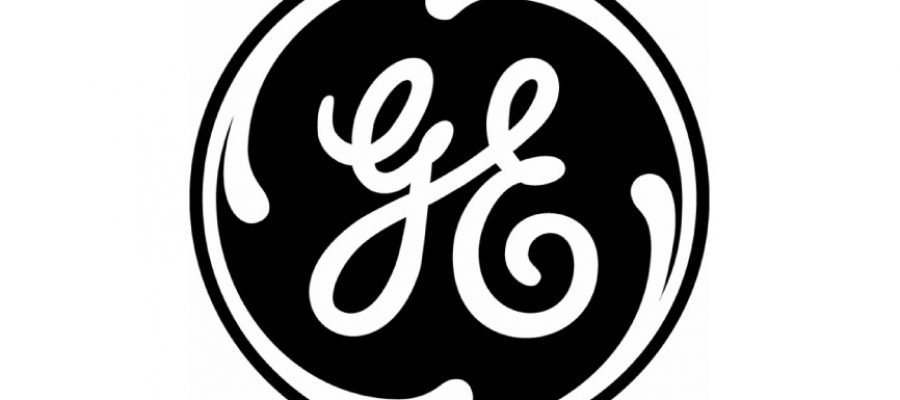The company General Electric (GE) has been around a very long time. You can visit their official webpage here. The company of today looks a lot different than the company of “yester-year” that I remember as a child.
I actually think their commercials are hysterical. Especially the one where the son tells his dad he is going to work for GE. His dad places a big ole’ sledgehammer on the end table and tells him it was his grandfathers. The son tells his dad he is going to be a programmer and won’t need the hammer. The dad calls out the son and asks “You can’t pick up the hammer son, can you?”….yes a few things are lost in translation but if you have seen the commercial, you will know which one I am referring to.
Well, this article is not about the quality of the commercials that GE makes, its about the price action for its stock. So let’s start reviewing some charts!
General Electric (GE) – 20 Year Chart
Since I am not familiar with the charts and price activity for General Electric, I am going to start big and look at this 20 year candlestick chart. Sometimes these charts provide clues about long-term support or resistance areas. It could even provide some clues as to the overall Elliott wave pattern the share price may be in. Let’s see if GE’s charts provide any longer-term clues.
This 20 year chart has 2 Fibonacci Retracement Tools that I’ve placed on it. One was on the entire downtrend (the black one) and the other was just on the last leg of the downtrend (the blue one). Looking at the entire downtrend that started from a high of $60.50, GE has already reached its minimum 38.2% Retracement. Interestingly, it reached the 50% Retracement Line before consolidating and pulling to the bottom of a Trading Channel I’ve illustrated.
The price action has been very well contained by the Fibonacci Retracement Tools. GE’s share price spent almost 2 years in-between the blue 50% and 61.8% Retracement Lines. GE’s share price then moved up to the next quadrant. The next quadrant seems to be defined as the blue 61.8% Retracement Line and the black 50% Retracement Line. GE’s share price has spent over a year and a half in this quadrant.
Typically, making a scale-in purchase of shares at the bottom of a Trading Channel is a good area. That’s where GE’s share price currently resides – right near the bottom of its Trading Channel.
The only thing that is a little concerning about its share price is the [s2If !current_user_can(access_s2member_level1)]….
If you want to continue reading this article for General Electric (GE), you must first login. I review a potentially bearish chart pattern developing on General Electric’s chart and the key price levels to watch.
If you are not a Trendy Stock Charts member, consider joining today! There are several different subscription plans available.[/s2If][s2If current_user_can(access_s2member_level1)]MACD Histogram that is showing increasing selling momentum. Selling momentum on a monthly chart may not show up every day as selling pressure on a daily chart, but it does indicate a continued possible downtrend for its share price.
Let’s zoom in on some charts and see what the shorter-term views indicate since there is conflicting information on the long-term chart.
GE – Head & Shoulders
This is a 3 year weekly candlestick chart for General Electric (GE). The long-term chart above was not very clear, and neither is this weekly chart. The long-term trend above showed increasing selling momentum. This chart shows a possible Head & Shoulders chart pattern that developed. A break of the neckline and the $24 – $25 price area is quick to follow.
GE’s share price developed a Bearish Engulfing candlestick pattern at the top of the Head. It then developed a Shooting Star candlestick pattern at the top of the right Shoulder. It also developed a Hanging Man candlestick pattern right before the Shooting Star. Three bearish reversal candlestick patterns in the same area. One bearish reversal candlestick usually provides enough resistance to get through. When there is a confluence of bearish candlesticks in an area, it provides even stiffer resistance.
The MACD Histogram is showing that selling momentum is decreasing, but it almost appears flat for 3 weeks. If the selling momentum does not start decreasing at a faster pace, it could be an indicator of another downwards push for GE’s share price. The neckline price to watch is around the $28.75 area.
Even though GE’s share price formed a Hammer candlestick pattern 3 weeks ago, that candlestick developed on extremely light buying volume. That does not give me a lot of confidence in the reversal. There was increasing selling volume preceding the Hammer too. Not a lot of confidence that the selling is done.
GE – Moving Averages
This is a 1 year chart for General Electric (GE) from a moving average perspective. I like to use 1 year daily candlestick charts when looking at moving averages. I’ve also overlaid a Fibonacci Retracement Tool on its most recent uptrend. It left 2 Rising Window candlestick patterns (gap-ups) in its uptrend. I’ve identified the gap-ups with the purple channels, my typical charting tool to indicate gaps. Both gap-ups were very minute in nature, each one was only at $0.01.

Analyzing a Daily Chart for General Electric Using Moving Averages, Trendlines and a Fibonacci Retracement Tool
Interesting how one of the gaps falls right on a 61.8% Retracement Line. I would think that is a decent support area. The strong buying volume to take GE’s share price back above the upper gap seems to confirm the support area. An argument could be made to make a 1/3 scale-in purchase of any potential long-term holding at current price levels or any pullback over the next couple days. It depends upon your trading style.
GE’s share price has decent buying support at the lower gap-up as well. The lower gap-up area is only 3% or so lower than the current price. Therefore making a purchase here seems to have limited downside risk in the immediate short-term.
If GE’s share price fails to break and hold above the 200 Day moving average on this rebound attempt, the chances increase significantly for another downwards move. Look for the lower gap-up to provide support in the case of a failed 200 Day take-over this week. The lower support area should provide for at least an initial bounce.
This lower gap-up support area is the key area in my opinion. I think an initial purchase is best made at this level. This lower gap-up area also sits right around the neckline area from the weekly chart. If the $28.75 area does not hold, neither will the previous bottom of $28.19.
General Electric (GE) – Summary
With conflicting signals on charts, one thing is for certain. Make gradual decisions. Definitely use a scale-in process for entering into a long position with General Electric (GE).
General Electric’s (GE) share price needs to re-take its 200 Day moving average in strong buying volume in the next week. If it does not, the chances increase significantly for a break of the neckline for its Head & Shoulders chart pattern. A break of the $28.75ish neckline area on heavy selling volume indicates another 10% or more will get shaved off the share price, so have a little patience on a break.
If these are shares that you want to own for the longer-term, getting the best price and maximizing your initial dividend rate is important. With the MACD Histogram on the monthly chart (longer-term perspective) still showing selling momentum that is increasing, it appears at a minimum that GE’s share price is going to test its neckline.
If there is a neckline break, any shares purchased at the neckline should be sold on the pullback back up to the neckline. Then wait for the downtrend to continue playing out and pick up all your shares at lower prices.
Shares purchased at the neckline that experience a bounce should be held for at least the next year. The bounce from the bottom of the Trading Channel would push GE’s share price towards the $40 mark over the next year’s time.
Purchasing shares at the neckline provide for a risk to reward ratio of more than 1:3, making for a favorable trade. Patience can be rewarded with more shares at times – a 10% discount in the share price means you can purchase 10% more shares. Watch the neckline area carefully. I wouldn’t be more than 1/3 invested until a successful rebound on strong volume occurs from the neckline. Otherwise stay nimble.
Good luck trading.
[/s2If]

















Ask a Question. Make a Comment. Leave a Reply.